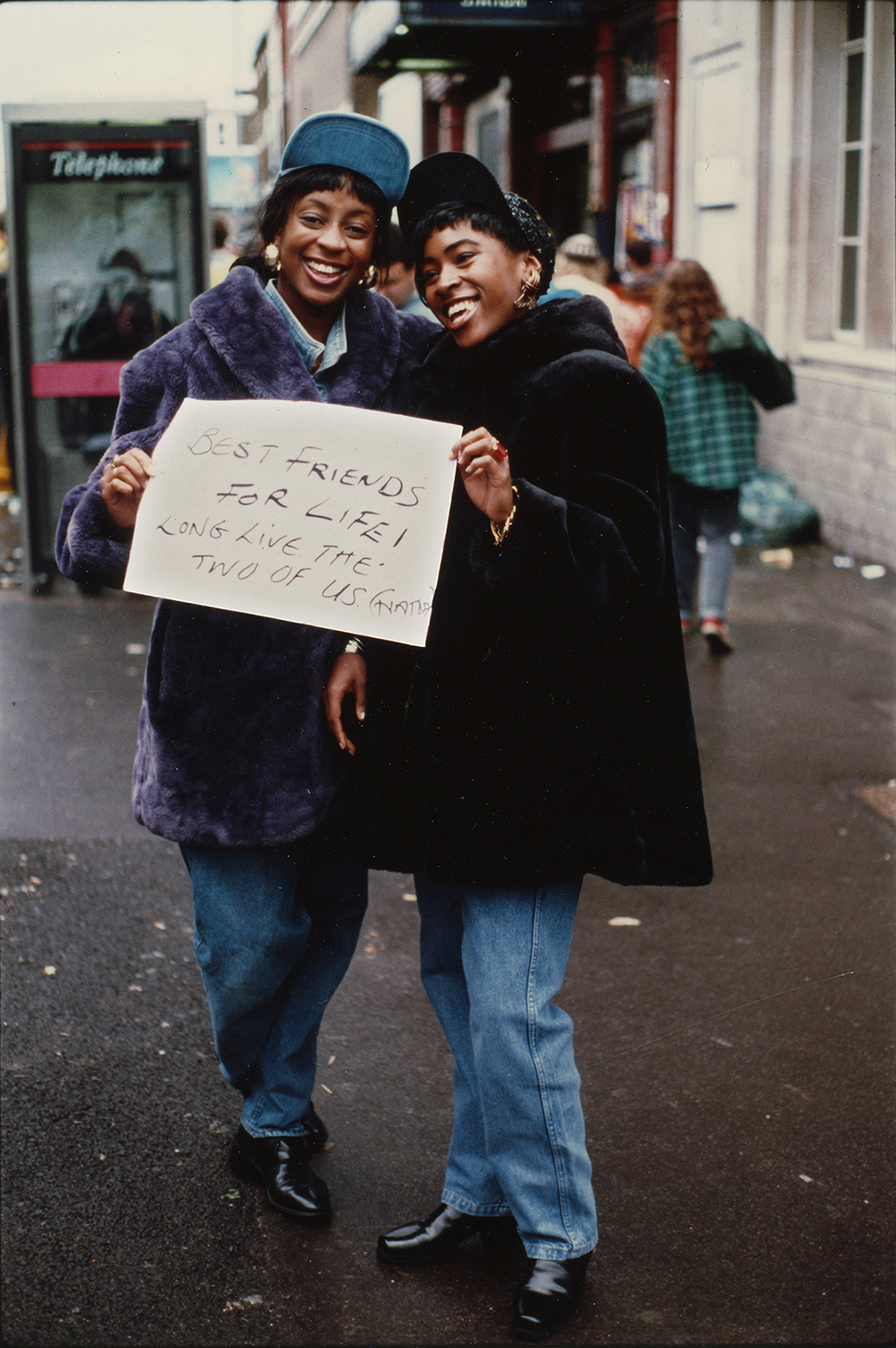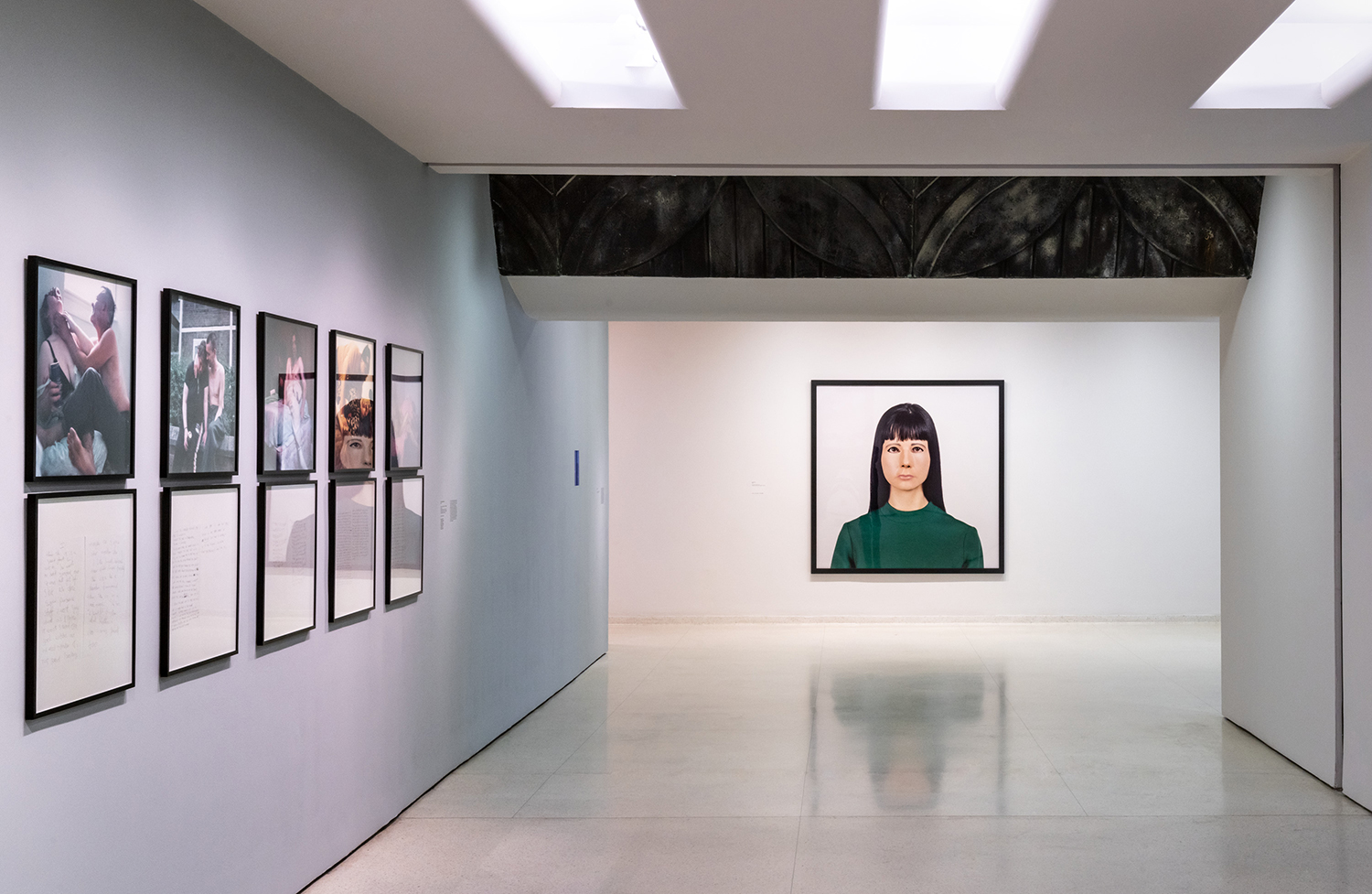The artist’s Guggenheim retrospective traces decades of work that mine the tensions between true self and social normativity
In her series Signs that say what you want them to say and not Signs that say what someone else wants you to say (1992–93), Wearing photographed strangers holding placards that revealed their inner thoughts. Signs… established her reputation as an artist mining tensions between true self and social normativity. This retrospective, featuring over 100 works in photography, video, sculpture and painting, cleaves to the notion that social masks brutalise, but also shows Wearing experimenting with masks as gender- and identity-bending, therefore liberating.

In some works Wearing’s idea of the gendered self is obstinately psychoanalytic: a mask that’s most vicious when internalised. In Wearing’s two-channel colour video 2 Into 1 (1997), a mother and her two boys are lip-synched so that she speaks in their voices, and vice versa, dissecting each other’s faults. The day I saw the show, a visitor walked out of another video, Sacha and Mum (1996) – in which two actors play an abusive mother and her daughter – complaining there was no violent-content warning. In texts that accompany Wearing’s photographic series A Woman Called Theresa (1998), of an alcoholic woman and her lovers in intimate poses, some of the men unleash diatribes against her – an illusion of domestic spontaneity unmasked and revealed as riddled with insecurity and anger.

In Wearing’s work from the early 2000s, however, masks shed their baggage as instruments of traumatic gender normativity. Already in 1995, in the video Homage to the woman with the bandaged face who I saw yesterday down Walworth Road, in which Wearing walks the street wearing a crude gauze mask, with narrow slits for eyes, her fascination with this disguise lies in its blankness and ambiguity. A similar impersonator-duality fuels Wearing’s ongoing photographic series Spiritual Family (2008–), in which she impersonates other artists. Both Me as Madame and Monsieur Duchamp (2018), a double portrait of Marcel Duchamp and his alter ego Rrose Sélavy, and Me as Cahun Holding a Mask of My Face (2012), in which Wearing, posing as the cross-dressing modernist Claude Cahun, daintily dangles her own face’s mask on a string, suggest that art and life stem from the same impulse to playact, with masks and other accoutrements of deception as a way to break out of the stalemate, or even the trauma, of the gender bind.
Gillian Wearing: Wearing Masks is at Solomon R. Guggenheim Museum, New York, until 4 April
